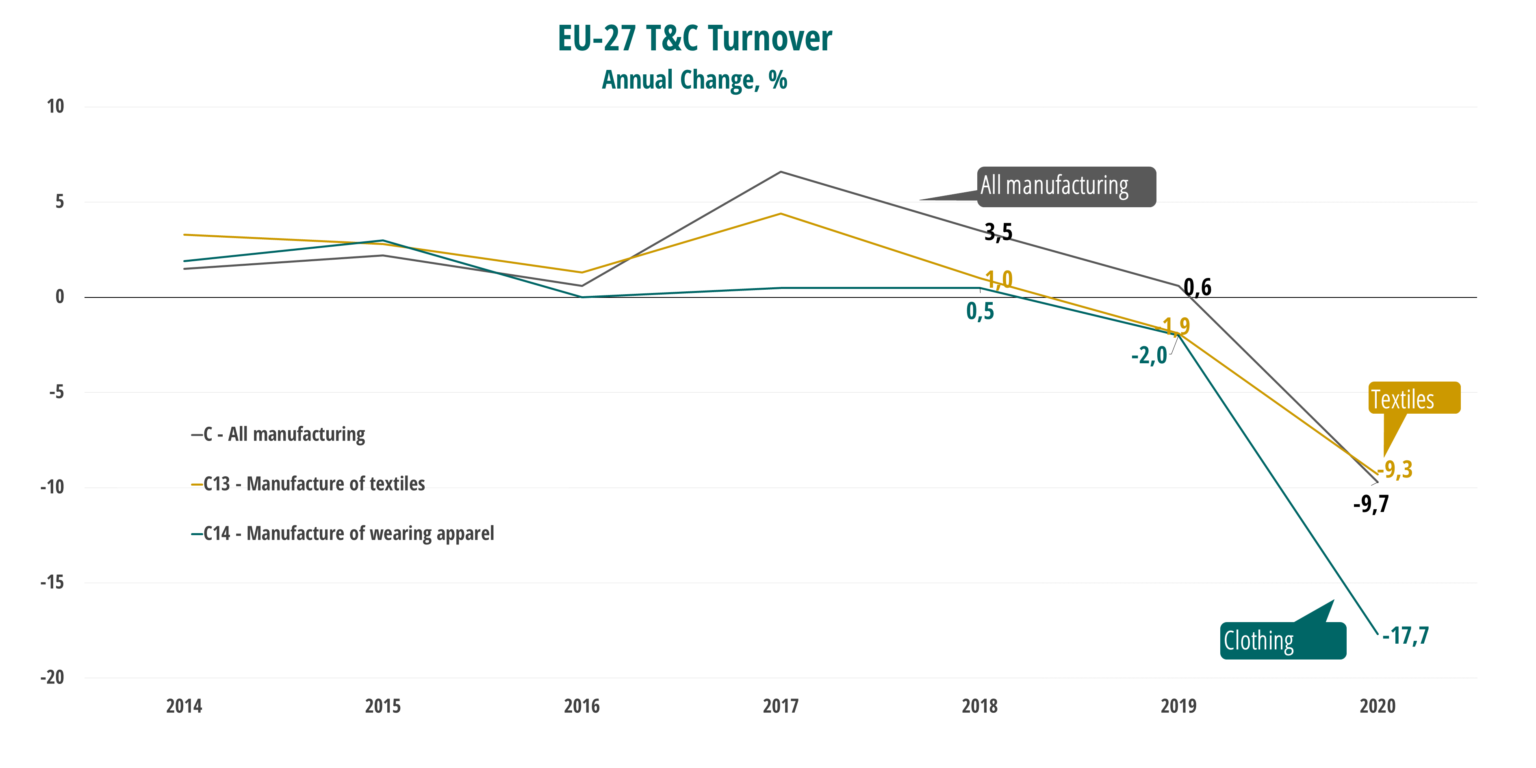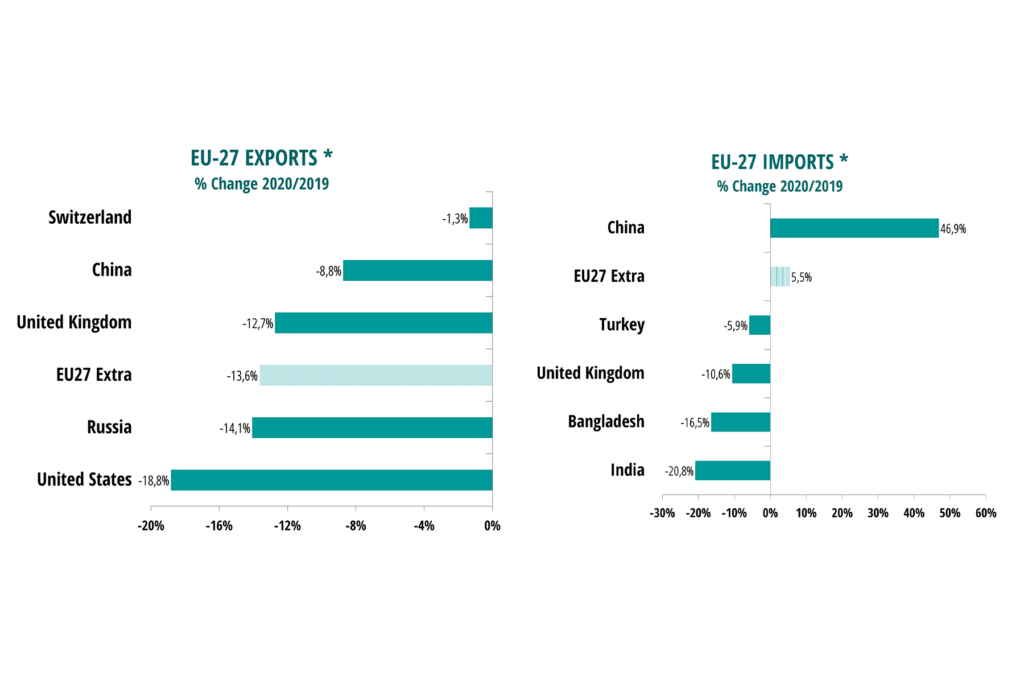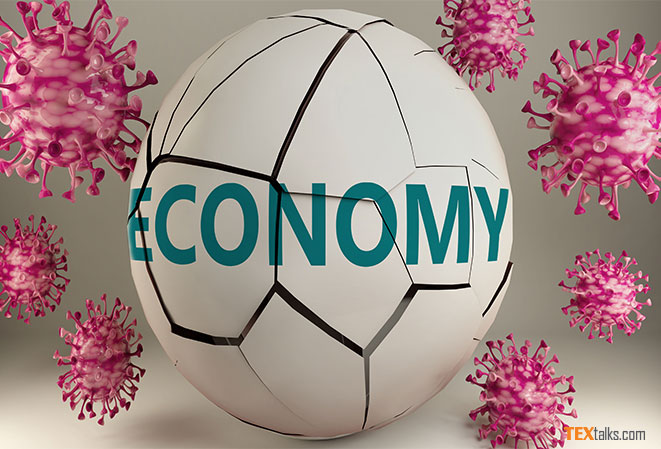EURATEX released its quarterly economic update on the 9th of April 2021. EURATEX showed concerns that the Covid19 crisis may soon be followed by disruptions in our global supply chains, affecting our industry’s competitiveness.
Over the full year 2020, EU sales of textiles fell by –9.3% and clothing sales by –17.7%, compared with 2019. Economic data up to December 2020 reflects a dramatic contraction in both the demand and production of textile and clothing caused by the pandemic. The crisis was particularly severe in the middle of the year, with production losses of over 50%.
 EU imports increased by +5.5% in 2020. This increase was primarily due to the import of personal protective equipment, including facemasks, especially from China – up from a value of €1 billion in 2019 to €20 billion in 2020. Towards the last quarter of 2020, business activity recovered for the textile industry (+1.6% compared with the previous quarter) but further deteriorated in the clothing sector (-6.8%) due to the decline in consumption expenditure slowdown in non-essential activities.
EU imports increased by +5.5% in 2020. This increase was primarily due to the import of personal protective equipment, including facemasks, especially from China – up from a value of €1 billion in 2019 to €20 billion in 2020. Towards the last quarter of 2020, business activity recovered for the textile industry (+1.6% compared with the previous quarter) but further deteriorated in the clothing sector (-6.8%) due to the decline in consumption expenditure slowdown in non-essential activities.
In March 2021, EU Business Confidence Indicator showed an upward trend in the textile industry (+3.8 points) and a modest recovery in the clothing industry (+1.6 points). The Employment Expectations Indicator also revealed an increase.
However, these signs of recovery are being jeopardized by recent turmoil in the textile and clothing supply chain, raising the prices of textile fibers and dyestuffs, and transport costs. Also, there is a negative impact on CO2 prices and political turmoil in some important sourcing countries such as China and Myanmar, which creates uncertainty, adding to the challenges of the corona pandemic.
 Euratex believes 2021 will be a critical year for the competitiveness of the European textile and clothing industry. A forward-looking EU textiles strategy, which offers the right policy mix and support instruments for SMEs, is essential.
Euratex believes 2021 will be a critical year for the competitiveness of the European textile and clothing industry. A forward-looking EU textiles strategy, which offers the right policy mix and support instruments for SMEs, is essential.
The EU Textiles strategy is expected to be issued in the third quarter of 2021. While it will put a strong focus on sustainability and circularity, Euratex believes the system must take a broader perspective and ensure long-term competitiveness. With around 160,000 companies employing 1.5 million workers, the EU textile and clothing industry is an essential pillar of the local economy across many EU regions. With over €61 billion of exports, the industry is a global player successfully commercializing high added value products on growing markets worldwide.



